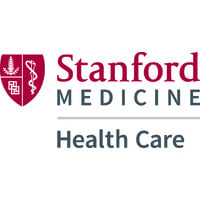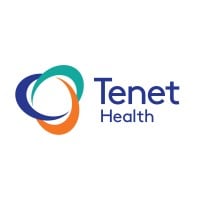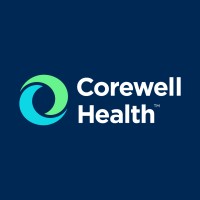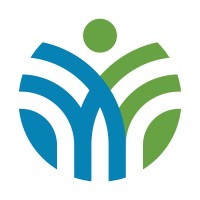
Dr. Sulaiman Al Habib Medical Group Company Cyber Security Posture
drsulaimanalhabib.comLeading Private Healthcare Provider in the Middle East With a vision to be the most trusted healthcare provider in medical excellence and patient experience globally, Dr. Sulaiman Al-Habib Medical Group (HMG) has become the largest provider of comprehensive healthcare services in the Middle East. As it is currently operating 20 Medical Facilities across Saudi Arabia, UAE, and Bahrain; in addition to developing the first private medical city in Saudi Arabia. Dr. Sulaiman AL-Habib Medical Group mission is to develop and operate state of the art medical facilities and provide innovative healthcare services to create value for people starting from the early stages of planning and designing until the final implementation, operation, obtaining the required accreditations. HMG has received 38 international and national awards and accreditations which include JCI, ISO, MEED, Forbes, CPQ, Arab Health Awards, The Middle East HR Excellence Award, and Middle East Insights’ Quality Service Awards.
DSAHMG Company Details
drsulaiman-alhabib-medical-group
10,001+ employees
349517
62
Hospitals and Health Care
drsulaimanalhabib.com
Scan still pending
DR._8301103
In-progress
Between 800 and 900
This score is AI-generated and less favored by cyber insurers, who prefer the TPRM score.
 DSAHMG Global Score
DSAHMG Global Score.png)

Dr. Sulaiman Al Habib Medical Group Company Scoring based on AI Models
| Model Name | Date | Description | Current Score Difference | Score |
|---|---|---|---|---|
| AVERAGE-Industry | 03-12-2025 | This score represents the average cybersecurity rating of companies already scanned within the same industry. It provides a benchmark to compare an individual company's security posture against its industry peers. | N/A | Between 800 and 900 |
Dr. Sulaiman Al Habib Medical Group Company Cyber Security News & History
| Entity | Type | Severity | Impact | Seen | Url ID | Details | View |
|---|
Dr. Sulaiman Al Habib Medical Group Company Subsidiaries

Leading Private Healthcare Provider in the Middle East With a vision to be the most trusted healthcare provider in medical excellence and patient experience globally, Dr. Sulaiman Al-Habib Medical Group (HMG) has become the largest provider of comprehensive healthcare services in the Middle East. As it is currently operating 20 Medical Facilities across Saudi Arabia, UAE, and Bahrain; in addition to developing the first private medical city in Saudi Arabia. Dr. Sulaiman AL-Habib Medical Group mission is to develop and operate state of the art medical facilities and provide innovative healthcare services to create value for people starting from the early stages of planning and designing until the final implementation, operation, obtaining the required accreditations. HMG has received 38 international and national awards and accreditations which include JCI, ISO, MEED, Forbes, CPQ, Arab Health Awards, The Middle East HR Excellence Award, and Middle East Insights’ Quality Service Awards.
Access Data Using Our API

Get company history
.png)
DSAHMG Cyber Security News
Sulaiman Al-Habib Medical Group boosts French ties
The 255-bed hospital, located on Takhassusi Road in Riyadh, has 135 specialized clinics, 103 consultants with different specializations and 136 specialists. Its ...
Al Rajhi Bank - 10 Most Innovative Companies in Saudi Arabia
Al Rajhi Bank has a particular focus on big data and AI, improved cybersecurity, and various financial technologies. Not only that, but it also ...
FII8: stc Group joins hands with three new partners for Sustainability Champions program
stc Group has been recognized as one of the leading Saudi companies in corporate sustainability, alongside 19 other organizations across seven ...
Top award for Sulaiman Al-Habib Medical Group
Nasser Alhuqbani, CEO of Dr. Sulaiman Al Habib Medical Group, won the health care industry — Leading CEO Excellence Award 2014, organized by the Middle East ...
Profits surge at Dr. Sulaiman Al-Habib, KSA’s largest private medical group
Dr. Sulaiman Al-Habib Medical Services Group (HMG), Saudi Arabia's largest private health services provider, reported a 29 percent jump in first quarter net ...
Saudi hospital operator Dr Sulaiman Al Habib acquires 25% of Tamkeen
Dr. Sulaiman Al Habib Medical Services Group, Saudi Arabia's largest private health services provider, has acquired 25 percent of human resources firm Tamkeen.
Dr. Sulaiman Al-Habib Academy to host graduation ceremony
Dr. Sulaiman Al-Habib Academy is all set to host a graduation ceremony for 330 medical fellowship and diploma students at the Kingdom Center on Nov. 20.
Who’s Who: Mohammed Al-Shammari, chairman at the AlUla Peregrina Trading Co.
A Harvard Business School alumnus, he has more than 17 years' experience working in the healthcare, insurance, and business sectors, most ...
Careem offers discounts to patients, visitors of Dr. Sulaiman Al-Habib Medical Group
Patients and visitors of the group's hospitals and pharmacies will have a discount on the trips provided by Careem, from and to hospitals and pharmacies of HMG.

DSAHMG Similar Companies

Stanford Health Care
Stanford Health Care, with multiple facilities throughout the Bay Area, is internationally renowned for leading edge and coordinated care in cancer care, neurosciences, cardiovascular medicine, surgery, organ transplant, medicine specialties, and primary care. Throughout its history, Stanford has be

Houston Methodist
Houston Methodist is one of the nation’s leading health systems and academic medical centers. The health system consists of eight hospitals: Houston Methodist Hospital, its flagship academic hospital in the Texas Medical Center, seven community hospitals and one long-term acute care hospital through

Tenet Healthcare
Tenet Healthcare Corporation (NYSE: THC) is a diversified healthcare services company headquartered in Dallas. Our care delivery network includes United Surgical Partners International, the largest ambulatory platform in the country, which operates ambulatory surgery centers and surgical hospitals.

Corewell Health
People are at the heart of everything we do, and the inspiration for our legacy of outstanding outcomes, innovation, strong community partnerships, philanthropy and transparency. Corewell Health is a not-for-profit health system that provides health care and coverage with an exceptional team of 65,0

Allina Health
People at Allina Health have a career of making a difference in the lives of the millions of patients we see each year at our 90+ clinics, 12 hospitals and through a wide variety of specialty care services in Minnesota and western Wisconsin. We’re a not-for-profit organization committed to enrich

UCLA Health
For more than half a century, UCLA Health has provided the best in healthcare and the latest in medical technology to the people of Los Angeles and throughout the world. Comprised of Ronald Reagan UCLA Medical Center, UCLA Medical Center Santa Monica, Resnick Neuropsychiatric Hospital at UCLA, UCLA

Frequently Asked Questions (FAQ) on Cybersecurity Incidents
DSAHMG CyberSecurity History Information
Total Incidents: According to Rankiteo, DSAHMG has faced 0 incidents in the past.
Incident Types: As of the current reporting period, DSAHMG has not encountered any cybersecurity incidents.
Total Financial Loss: The total financial loss from these incidents is estimated to be {total_financial_loss}.
Cybersecurity Posture: The company's overall cybersecurity posture is described as Leading Private Healthcare Provider in the Middle East With a vision to be the most trusted healthcare provider in medical excellence and patient experience globally, Dr. Sulaiman Al-Habib Medical Group (HMG) has become the largest provider of comprehensive healthcare services in the Middle East. As it is currently operating 20 Medical Facilities across Saudi Arabia, UAE, and Bahrain; in addition to developing the first private medical city in Saudi Arabia. Dr. Sulaiman AL-Habib Medical Group mission is to develop and operate state of the art medical facilities and provide innovative healthcare services to create value for people starting from the early stages of planning and designing until the final implementation, operation, obtaining the required accreditations. HMG has received 38 international and national awards and accreditations which include JCI, ISO, MEED, Forbes, CPQ, Arab Health Awards, The Middle East HR Excellence Award, and Middle East Insights’ Quality Service Awards..
Detection and Response: The company detects and responds to cybersecurity incidents through {description_of_detection_and_response_process}.
Incident Details
Incident 1: Ransomware Attack
Title: {Incident_Title}
Description: {Brief_description_of_the_incident}
Date Detected: {Detection_Date}
Date Publicly Disclosed: {Disclosure_Date}
Date Resolved: {Resolution_Date}
Type: {Type_of_Attack}
Attack Vector: {Attack_Vector}
Vulnerability Exploited: {Vulnerability}
Threat Actor: {Threat_Actor}
Motivation: {Motivation}
Incident 2: Data Breach
Title: {Incident_Title}
Description: {Brief_description_of_the_incident}
Date Detected: {Detection_Date}
Date Publicly Disclosed: {Disclosure_Date}
Date Resolved: {Resolution_Date}
Type: {Type_of_Attack}
Attack Vector: {Attack_Vector}
Vulnerability Exploited: {Vulnerability}
Threat Actor: {Threat_Actor}
Motivation: {Motivation}
Common Attack Types: As of now, the company has not encountered any reported incidents involving common cyberattacks.
Identification of Attack Vectors: The company identifies the attack vectors used in incidents through {description_of_identification_process}.
Impact of the Incidents
Incident 1: Ransomware Attack
Financial Loss: {Financial_Loss}
Data Compromised: {Data_Compromised}
Systems Affected: {Systems_Affected}
Downtime: {Downtime}
Operational Impact: {Operational_Impact}
Conversion Rate Impact: {Conversion_Rate_Impact}
Revenue Loss: {Revenue_Loss}
Customer Complaints: {Customer_Complaints}
Brand Reputation Impact: {Brand_Reputation_Impact}
Legal Liabilities: {Legal_Liabilities}
Identity Theft Risk: {Identity_Theft_Risk}
Payment Information Risk: {Payment_Information_Risk}
Incident 2: Data Breach
Financial Loss: {Financial_Loss}
Data Compromised: {Data_Compromised}
Systems Affected: {Systems_Affected}
Downtime: {Downtime}
Operational Impact: {Operational_Impact}
Conversion Rate Impact: {Conversion_Rate_Impact}
Revenue Loss: {Revenue_Loss}
Customer Complaints: {Customer_Complaints}
Brand Reputation Impact: {Brand_Reputation_Impact}
Legal Liabilities: {Legal_Liabilities}
Identity Theft Risk: {Identity_Theft_Risk}
Payment Information Risk: {Payment_Information_Risk}
Average Financial Loss: The average financial loss per incident is {average_financial_loss}.
Commonly Compromised Data Types: The types of data most commonly compromised in incidents are {list_of_commonly_compromised_data_types}.
Incident 1: Ransomware Attack
Entity Name: {Entity_Name}
Entity Type: {Entity_Type}
Industry: {Industry}
Location: {Location}
Size: {Size}
Customers Affected: {Customers_Affected}
Incident 2: Data Breach
Entity Name: {Entity_Name}
Entity Type: {Entity_Type}
Industry: {Industry}
Location: {Location}
Size: {Size}
Customers Affected: {Customers_Affected}
Response to the Incidents
Incident 1: Ransomware Attack
Incident Response Plan Activated: {Yes/No}
Third Party Assistance: {Yes/No}
Law Enforcement Notified: {Yes/No}
Containment Measures: {Containment_Measures}
Remediation Measures: {Remediation_Measures}
Recovery Measures: {Recovery_Measures}
Communication Strategy: {Communication_Strategy}
Adaptive Behavioral WAF: {Adaptive_Behavioral_WAF}
On-Demand Scrubbing Services: {On_Demand_Scrubbing_Services}
Network Segmentation: {Network_Segmentation}
Enhanced Monitoring: {Enhanced_Monitoring}
Incident 2: Data Breach
Incident Response Plan Activated: {Yes/No}
Third Party Assistance: {Yes/No}
Law Enforcement Notified: {Yes/No}
Containment Measures: {Containment_Measures}
Remediation Measures: {Remediation_Measures}
Recovery Measures: {Recovery_Measures}
Communication Strategy: {Communication_Strategy}
Adaptive Behavioral WAF: {Adaptive_Behavioral_WAF}
On-Demand Scrubbing Services: {On_Demand_Scrubbing_Services}
Network Segmentation: {Network_Segmentation}
Enhanced Monitoring: {Enhanced_Monitoring}
Incident Response Plan: The company's incident response plan is described as {description_of_incident_response_plan}.
Third-Party Assistance: The company involves third-party assistance in incident response through {description_of_third_party_involvement}.
Data Breach Information
Incident 2: Data Breach
Type of Data Compromised: {Type_of_Data}
Number of Records Exposed: {Number_of_Records}
Sensitivity of Data: {Sensitivity_of_Data}
Data Exfiltration: {Yes/No}
Data Encryption: {Yes/No}
File Types Exposed: {File_Types}
Personally Identifiable Information: {Yes/No}
Prevention of Data Exfiltration: The company takes the following measures to prevent data exfiltration: {description_of_prevention_measures}.
Handling of PII Incidents: The company handles incidents involving personally identifiable information (PII) through {description_of_handling_process}.
Ransomware Information
Incident 1: Ransomware Attack
Ransom Demanded: {Ransom_Amount}
Ransom Paid: {Ransom_Paid}
Ransomware Strain: {Ransomware_Strain}
Data Encryption: {Yes/No}
Data Exfiltration: {Yes/No}
Ransom Payment Policy: The company's policy on paying ransoms in ransomware incidents is described as {description_of_ransom_payment_policy}.
Data Recovery from Ransomware: The company recovers data encrypted by ransomware through {description_of_data_recovery_process}.
Regulatory Compliance
Incident 1: Ransomware Attack
Regulations Violated: {Regulations_Violated}
Fines Imposed: {Fines_Imposed}
Legal Actions: {Legal_Actions}
Regulatory Notifications: {Regulatory_Notifications}
Incident 2: Data Breach
Regulations Violated: {Regulations_Violated}
Fines Imposed: {Fines_Imposed}
Legal Actions: {Legal_Actions}
Regulatory Notifications: {Regulatory_Notifications}
Regulatory Frameworks: The company complies with the following regulatory frameworks regarding cybersecurity: {list_of_regulatory_frameworks}.
Ensuring Regulatory Compliance: The company ensures compliance with regulatory requirements through {description_of_compliance_measures}.
Lessons Learned and Recommendations
Incident 1: Ransomware Attack
Lessons Learned: {Lessons_Learned}
Incident 2: Data Breach
Lessons Learned: {Lessons_Learned}
Incident 1: Ransomware Attack
Recommendations: {Recommendations}
Incident 2: Data Breach
Recommendations: {Recommendations}
Key Lessons Learned: The key lessons learned from past incidents are {list_of_key_lessons_learned}.
Implemented Recommendations: The company has implemented the following recommendations to improve cybersecurity: {list_of_implemented_recommendations}.
References
Additional Resources: Stakeholders can find additional resources on cybersecurity best practices at {list_of_additional_resources}.
Investigation Status
Incident 1: Ransomware Attack
Investigation Status: {Investigation_Status}
Incident 2: Data Breach
Investigation Status: {Investigation_Status}
Communication of Investigation Status: The company communicates the status of incident investigations to stakeholders through {description_of_communication_process}.
Stakeholder and Customer Advisories
Incident 1: Ransomware Attack
Stakeholder Advisories: {Stakeholder_Advisories}
Customer Advisories: {Customer_Advisories}
Incident 2: Data Breach
Stakeholder Advisories: {Stakeholder_Advisories}
Customer Advisories: {Customer_Advisories}
Advisories Provided: The company provides the following advisories to stakeholders and customers following an incident: {description_of_advisories_provided}.
Initial Access Broker
Incident 1: Ransomware Attack
Entry Point: {Entry_Point}
Reconnaissance Period: {Reconnaissance_Period}
Backdoors Established: {Backdoors_Established}
High Value Targets: {High_Value_Targets}
Data Sold on Dark Web: {Yes/No}
Incident 2: Data Breach
Entry Point: {Entry_Point}
Reconnaissance Period: {Reconnaissance_Period}
Backdoors Established: {Backdoors_Established}
High Value Targets: {High_Value_Targets}
Data Sold on Dark Web: {Yes/No}
Monitoring and Mitigation of Initial Access Brokers: The company monitors and mitigates the activities of initial access brokers through {description_of_monitoring_and_mitigation_measures}.
Post-Incident Analysis
Incident 1: Ransomware Attack
Root Causes: {Root_Causes}
Corrective Actions: {Corrective_Actions}
Incident 2: Data Breach
Root Causes: {Root_Causes}
Corrective Actions: {Corrective_Actions}
Post-Incident Analysis Process: The company's process for conducting post-incident analysis is described as {description_of_post_incident_analysis_process}.
Corrective Actions Taken: The company has taken the following corrective actions based on post-incident analysis: {list_of_corrective_actions_taken}.
Additional Questions
General Information
Ransom Payment History: The company has {paid/not_paid} ransoms in the past.
Last Ransom Demanded: The amount of the last ransom demanded was {last_ransom_amount}.
Last Attacking Group: The attacking group in the last incident was {last_attacking_group}.
Incident Details
Most Recent Incident Detected: The most recent incident detected was on {most_recent_incident_detected_date}.
Most Recent Incident Publicly Disclosed: The most recent incident publicly disclosed was on {most_recent_incident_publicly_disclosed_date}.
Most Recent Incident Resolved: The most recent incident resolved was on {most_recent_incident_resolved_date}.
Impact of the Incidents
Highest Financial Loss: The highest financial loss from an incident was {highest_financial_loss}.
Most Significant Data Compromised: The most significant data compromised in an incident was {most_significant_data_compromised}.
Most Significant System Affected: The most significant system affected in an incident was {most_significant_system_affected}.
Response to the Incidents
Third-Party Assistance in Most Recent Incident: The third-party assistance involved in the most recent incident was {third_party_assistance_in_most_recent_incident}.
Containment Measures in Most Recent Incident: The containment measures taken in the most recent incident were {containment_measures_in_most_recent_incident}.
Data Breach Information
Most Sensitive Data Compromised: The most sensitive data compromised in a breach was {most_sensitive_data_compromised}.
Number of Records Exposed: The number of records exposed in the most significant breach was {number_of_records_exposed}.
Ransomware Information
Highest Ransom Demanded: The highest ransom demanded in a ransomware incident was {highest_ransom_demanded}.
Highest Ransom Paid: The highest ransom paid in a ransomware incident was {highest_ransom_paid}.
Regulatory Compliance
Highest Fine Imposed: The highest fine imposed for a regulatory violation was {highest_fine_imposed}.
Most Significant Legal Action: The most significant legal action taken for a regulatory violation was {most_significant_legal_action}.
Lessons Learned and Recommendations
Most Significant Lesson Learned: The most significant lesson learned from past incidents was {most_significant_lesson_learned}.
Most Significant Recommendation Implemented: The most significant recommendation implemented to improve cybersecurity was {most_significant_recommendation_implemented}.
References
Most Recent Source: The most recent source of information about an incident is {most_recent_source}.
Most Recent URL for Additional Resources: The most recent URL for additional resources on cybersecurity best practices is {most_recent_url}.
Investigation Status
Current Status of Most Recent Investigation: The current status of the most recent investigation is {current_status_of_most_recent_investigation}.
Stakeholder and Customer Advisories
Most Recent Stakeholder Advisory: The most recent stakeholder advisory issued was {most_recent_stakeholder_advisory}.
Most Recent Customer Advisory: The most recent customer advisory issued was {most_recent_customer_advisory}.
Initial Access Broker
Most Recent Entry Point: The most recent entry point used by an initial access broker was {most_recent_entry_point}.
Most Recent Reconnaissance Period: The most recent reconnaissance period for an incident was {most_recent_reconnaissance_period}.
Post-Incident Analysis
Most Significant Root Cause: The most significant root cause identified in post-incident analysis was {most_significant_root_cause}.
Most Significant Corrective Action: The most significant corrective action taken based on post-incident analysis was {most_significant_corrective_action}.
What Do We Measure?
















Every week, Rankiteo analyzes billions of signals to give organizations a sharper, faster view of emerging risks. With deeper, more actionable intelligence at their fingertips, security teams can outpace threat actors, respond instantly to Zero-Day attacks, and dramatically shrink their risk exposure window.
These are some of the factors we use to calculate the overall score:
Identify exposed access points, detect misconfigured SSL certificates, and uncover vulnerabilities across the network infrastructure.
Gain visibility into the software components used within an organization to detect vulnerabilities, manage risk, and ensure supply chain security.
Monitor and manage all IT assets and their configurations to ensure accurate, real-time visibility across the company's technology environment.
Leverage real-time insights on active threats, malware campaigns, and emerging vulnerabilities to proactively defend against evolving cyberattacks.




